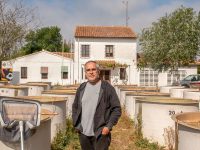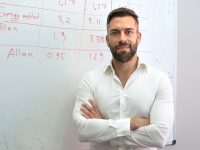Interview with Jack Szostak
«We want know how evolution started all by itself»
Nobel Prize in Physiology or Medicine in 2009
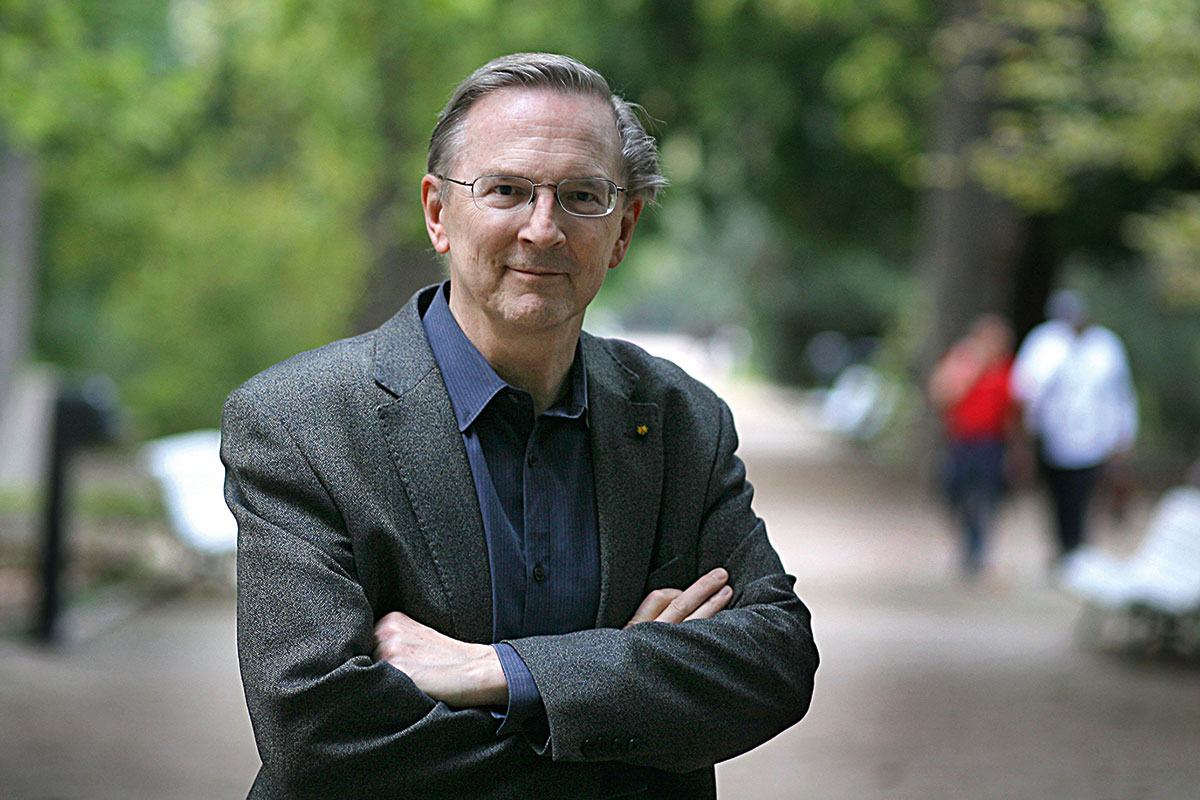
The Yellowstone National Park (Wyoming, United States) is home to the Grand Prismatic Spring, a thermal spring where boiling water rises thirty-six metres from the core of the Earth up to the surface. Water then offers a beautiful chromatic show, where concentric bands that start with a shy green and finish with a flaming orange surround the pure blue of the centre. This colour gradation forms a sort of giant thermometer that marks at the same time the water temperature and the limits of life: no terrestrial organism is able to survive in the midst of that smoky blue; but as the water cools down towards the edges, we start to find thermophilic bacteria who are a unique species on Earth, capable of withstanding 99 ºC temperatures.
Jack Szostak (London, 1952) often mentions Yellowstone as an example of how life always finds a way, unbelievable as this may seem, and then proceeds to a victorious (though hard) conquest of the environment. Professor of Genetics at Harvard Medical School and researcher at the Department of Molecular Biology in Massachusetts General Hospital, Szostak received the Nobel Prize in Physiology or Medicine in 2009, along with the molecular biology experts Elizabeth Blackburn and Carol Greider. The award was a recognition for his discovery of the role played by telomeres and the telomerase enzyme in the prevention of chromosome degradation during cell division, a finding that marked a milestone in the study of cell aging. Although with some delay (the trio’s award-winning research was published throughout the 1980s), the Royal Swedish Academy of Sciences honoured at last «a discovery that has stimulated the development of new therapeutic strategies».1 Currently, Jack Szostak dedicates all his efforts to try and re/create the primitive cell capable of self-reproduction and spark the process of evolution described by Charles Darwin. The greatness of this task clashes with professor Szostak’s humbleness: not only he always speaks in a modest «we», in reference to the team working with him in his Massachusetts laboratory, he also remarks that «this is just chemistry».
«Very simple experiments in chemistry can give us some insight into the origin of life»
On November 18, 2016, he visited the University of Valencia to participate in the Meetings of International Excellence VLC/CAMPUS. His conference on the origin of life drew hundreds of people to Burjassot, and many of them could not get a place inside the Darwin Room of the campus Burjassot-Paterna, which has a capacity for 311 people. Given this circumstance, professor Szostak suggested doing a second session and he then filled the room up again. Despite the unexpected amount of work, he still had the energy to meet up with Mètode. He told us about his career, commented on the latest developments in his research and gave us his point of view about some issues affecting the current scientific scene.
In one of your recent papers you said that answering the question of the origin of life seemed easier than finding about the origin of the universe or consciousness. How did you get to that conclusion?
We can do very simple experiments in chemistry than can give us some insight into the origin of life. The work on the origin universe is incredibly abstract: mathematics, particle physics… It is very interesting but I think going back to understand why the Big Bang happened seems so difficult to me. The other interesting problem is the origin of consciousness. At the time I started working, the tools to understand the working of the brain just did not exist. Now we are beginning to have them, we are just at the beginning. So if I was a young student, I very well may be going into neuroscience.
At the beginning of your career, you were in the field of genetics and then you focused on studying the origin of life. What caused this change of direction?
In my early career I worked on two things: the repair of broken DNA and telomeres, and those were related. When I set up my lab, it was to understand how breaks in DNA were repaired. Then I met and talked with Elizabeth Blackburn and she had DNA ends that did «not» get repaired. They behaved so differently. It was very interesting. So we used genetics and biochemistry to study those DNA processes. And at some point, it started to feel like there were many people working with telomeres. It was obvious that the next level of experiments had to be in animal systems and people. I did not want to be in such a competitive field, I did not want to work with animal systems… So I started to look around for other things. I even thought about neuroscience, o even structural biology, but it seemed there were lots of people doing that. The same years that we started to work on telomeres, it was the discovery of ribosomes. Ribosomes were still a nucleic acid, biochemistry, such a big field, so we worked on ribosomes for several years and then we started to take a more evolutionary approach. We wanted new ribosomes that were not available in nature, so we needed to evolve them ourselves. That led to working on directed evolution and that led directly to the origin of life, because we wanted know how evolution started all by itself. One thing is to do directed evolution in the lab, with the tools, the enzymes, the sequencing… But for it to happen spontaneously, all over the Earth… It was very mysterious.
The main goal of your laboratory is to synthesize a primitive cell capable to reproduce and evolve according to Darwin’s theory. How would this primitive cell be?
It is a very simple version of a modern cell. It has a cell membrane and small pieces of RNA inside. The membrane can grow and divide in response to changes in the environment, and the RNA can get replicated because of the surrounding chemistry. Basically, the environment has to control the growth and division of the cell. However, as the cell evolves, it develops a machinery to control these processes. It becomes independent of the local environment and it is able colonize new environments. But at the beginning, it had to start off very simple and it really could only live in these environments that supported these cycles of growth and division.
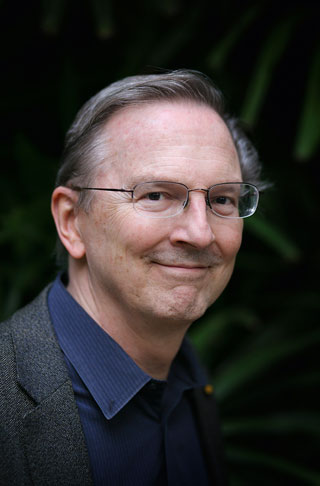
Jesús Císcar
What kind of experiments do you perform in your laboratory to try and «find» that primitive cell?
To really make a cell that can evolve of course you need genetic information. This information has to be able to do something useful. So that brought us back to nucleic acids, to the chemistry of ARN replication. A lot of the work that we are doing right now are relatively simply experiments trying to understand this process of replication. Of course, we do very controlled experiments in the laboratory, but the ultimate goal is to understand exactly how, on the early Earth, it all happened spontaneously.
What is your vision on that early Earth environment that allowed the emergence of life?
We have some theories that come partly from looking at the modern Earth. We can study impact craters, volcano craters, many volcanically active parts of the Earth such as Yellowstone, Iceland, the Kamchatka Peninsula… Here there is a lot of water circulation through the rocks that is heated up, with very interesting chemistry going on. It is on the surface, so you have surface solar radiation, and the chemistry of the atmosphere. If you try to translate these environments back to four billion years ago… The chemistry and the atmosphere were different, but you can start to imagine how it all would have lead to the origin of life.
Your research needs a multidisciplinary approach, with a great amount of different problems and questions to solve. Is this part of the appeal for you?
Absolutely, yeah. My lab has about twenty people and they have different backgrounds: some people come in with computational mathematics backgrounds, so we can do theoretical chemistry; others come in with training in synthetic organic chemistry, so they can make any molecules we want. Other people come in with in backgrounds in molecular biology so they understand RNA, and sequencing and those kinds of experiments. Other people have worked on membranes, vesicles, microscopy… So this research ticks people with all kinds of backgrounds. And of course to work together, they have to learn how to talk to each other. They come in with different languages: the language of computational chemistry, x-ray crystallography, or nuclear magnetic resonance… And it takes a lot for people to learn how to communicate.
I guess your laboratory has a lot of candidates…
[Laughing] Yes, yes!
A couple of years ago, you said that you were very close to «make life in the lab». What are your prospects right now?
[Laughing] So we could be now a couple of years closer! Actually, I think that there are only a few remaining problems that need to be solved to have a good understanding of the path forward. If we are lucky, and we can solve them, we might be able to build cells in the lab.
Can you tell us what these remaining problems are?
One is that, for the RNA copying, we use this chemically reactive protein blocks, and they tend to fall apart when they react with water. And once they fall apart, that is the end of it. We need to understand how to put energy into the system in the right way so that it can keep going. Another problem is that when you copy RNA, you end up with a two-stranded double-helix. We can get the strands apart, but they come back together again too quickly. We know some ways to slow that down, but we do not have a complete answer yet. Another one is the seizure of the metal ions for the RNA replication process. Magnesium should be a coordinated complex with something else so it does not hurt the membranes. We have a proof of principle solution, but we want something more realistic. Maybe something that it would let us use much less of these metal ions in the concentrations. And again, we have some ideas that are very close to come to a solution. And there always can be something that we have not thought of.
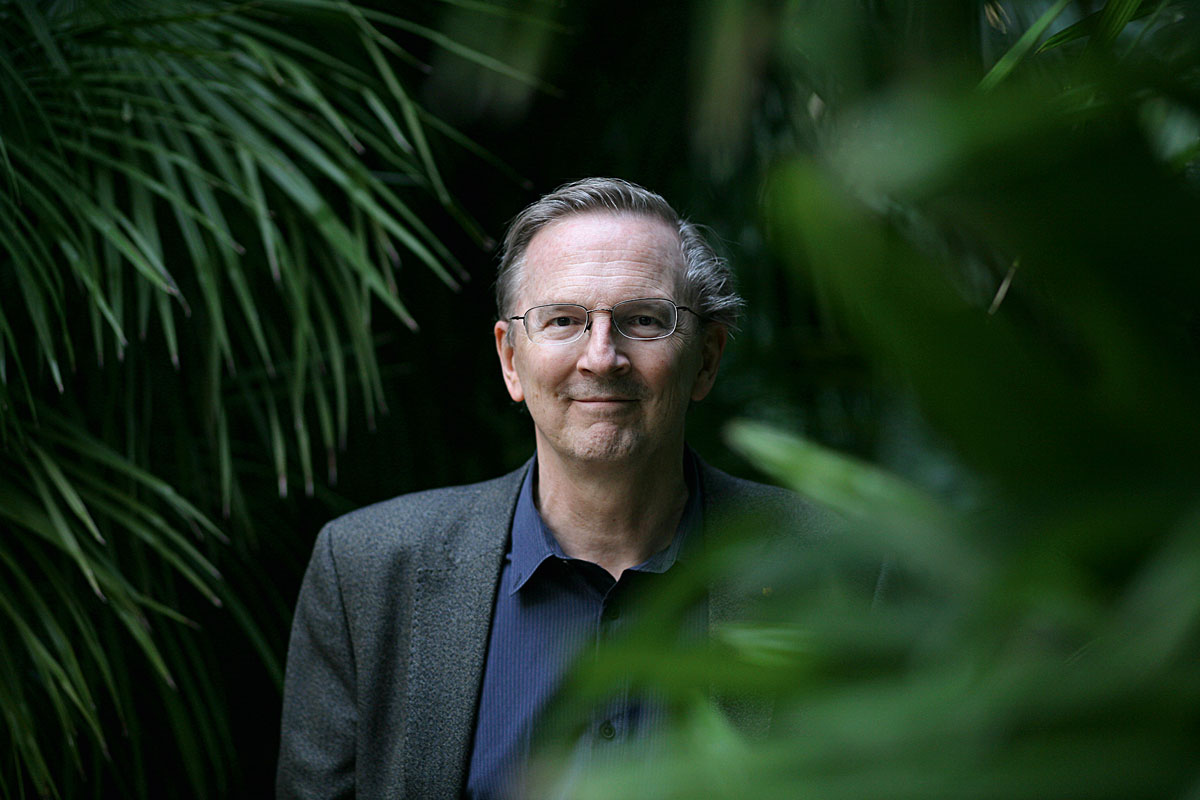
Jesús Císcar
«Some people have said to me: “You know, you do not have to do this, it is already explained in the Bible”»
Probably «making life in the lab» is a controversial issue for some people. Have you been target of criticism or controversy?
Not really. Some people have said to me: «You know, you do not have to do this, it is already explained in the Bible. You are wasting your time, we already know the answer.» Of course, I want a more natural explanation. I think there is more controversy about human life, about the origin of humanity. When people realise that this is just chemistry, they are not so interested. It is not so controversial.
So, if one day you do achieve this goal, what kind of impact do you think it will have?
Scientists will say: «Well, it is obvious, it had to be that». Very religious people will say: «I do not believe that» or «It is not relevant». So, the impact might not be so huge in the short term. But in my optimistic days, I would like to think that maybe this will contribute to people accepting that life is a natural phenomenon. That it emerged in a natural way, nothing magical or supernatural about it. And that, along with advances in other parts of science, will contribute to people accepting a more scientific view of the world. I think if we are going to solve the problems of the world, we have to have that. We have to have people who believe in evidence, in testing ideas, and not just accepting what we are told. So I hope this contributes to that.
«If we reach to other planets to study forms of life, if they exist, I would not be terribly surprised if at a biochemical level they were the same as us»
When we think about life «out there», we always have this very anthropocentric vision of life, as we tend to picture it as it is here. Do you think your investigation might contribute to change that idea?
It is not so clear. It could be that there is some convergence and that actually chemistry leads most frequently to the beginnings of life that use nucleic acids, membranes, peptides, so… If in the distant future we reach to other planets to study those forms of life, if they exist, I would not be terribly surprised if at a biochemical level they were the same as us. Of course, if that life evolved to more complex ones, it might look very different. Or, then again, there could be a convergent evolution. We will have to see.
«We need a scientific view of the world if we are going to solve its problems»
Many times science funding depends on the practicality of research. Has this been a problem for your project?
Well, it has been a problem for the field as a whole. It is a small field, there is not that many people. Part of the reason is because it is not that easy to come up with productive ideas. And the other part is that it has no obvious applications, it is just interesting, intellectual curiosity. So there is not much money, because there are very urgent needs: to spend money on medical problems, for example. So it has been difficult. But it is maybe getting better: there are private foundations that are supporting this field, like the Simons foundation. There is great interest in Europe and in Japan, where more funding in becoming available. Of course, you could add up all the money of the research on the origin of life and it would be tiny compared to the money for the Large Hadron Collider at CERN and the study of particle physics, which is also driven by intellectual curiosity. I think there are no immediate, practical applications of studying proton annihilation. But it is interesting, it should be funded.
You have mentioned the Simons Foundation, a private, philanthropic organization that funds research on basic sciences and mathematics. What role do this kind of organizations play in the scientific research of United States?
The Simons Foundation is a wonderful, new example. It is unusual, because its founder, John Simmons is a mathematician: he was a chairman of the Department of Mathematics at Stony Book University. So now that he can, he is very happy to be able to support interesting parts of science that are not so well funded. And of course there are other foundations, like the Howard Hughes Medical Institute that supports a lot of really great science, and they also support my lab, or the Gates foundation, which support lots of important medical research. They are playing an increasing role. I mean, it is still small compared to the government funding for the National Institutes of Health (NIH), for instance. Their budgets are very large compared to these foundations, but these can be more flexible, and fund work that is more creative or riskier.
Let’s talk about creationism. It has always been a popular current in United States and surprisingly, now it is also winning supporters in Europe. Some schools in the Netherlands, Germany or England are starting to teach it.
This is really terrible. People are just turning away from the real world
and choosing to believe crazy myths.
Why do you think this is happening?
That is a good question. I think, in some ways, it is easier. To understand the details at scientific level is quite difficult and it is a lot of information to absorb to really understand it. So if there is a simple story, that is easier to believe… Usually, along with that, there is the idea of purpose for life, which can be very comforting to people. But I think it is kind of sad. It is better if we find our own purpose in life and not just believe stories.
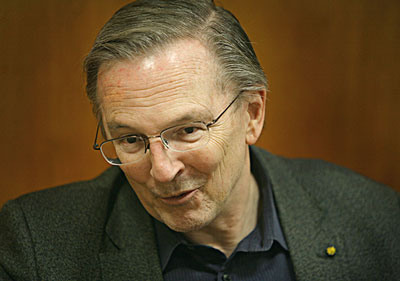
Jesús Císcar
In a country pioneering in so many science fields like the United States, how can these sort of ideas be so popular?
You can see from the recent election the country is very divided. Half of the population is relatively liberal, educated, willing to engage with the real world and to find solutions. And the other half of the country is very conservative, and does not believe in a lot of scientific explanations. So it is very polarized.
Do you share the concerns expressed by many of your colleagues about president Trump’s policies on science?
Of course. I mean, global warming is a huge problem for humanity and we have a president that thinks it is a hoax. This is a very dangerous situation. Now, I think we will have to wait and see how he actually works in practice. Maybe he will take a more pragmatic view of things. We will have and see.
You participated in a project called Exploring Life’s Origins, aimed at disseminating the work in your laboratory through animations and visual compositions. How was this experience for you? Do you think it is important to disseminate this knowledge to wider audiences?
Absolutely. That project started because we were able to get money to support Janet Iwasa, Molecular Biology PhD, and have her in the lab for a couple of years, creating these animations which, I think, were very useful for helping to get some of these ideas to get across. That project is a bit out of date now but I would love to do more of that. But it is not easy to get money to communicate science.
«The good thing about the Nobel is that it opened up new opportunities and ways to help young scientists»
How did the Nobel prize change your life?
At some level, not so much. Our focus is still on science and that is what I spend most of my time doing. There is only so much time you can spend travelling and visiting places. I mean, it is important to communicate science and go and meet colleagues in different parts of the world. That is good. If I wanted to, I could spend my whole life just travelling around the world. But I do not want to do that. I would say that the good thing about it is that it has opened up some new opportunities and new ways to help young scientists. And also to try and help raise money to support creative research or just to encourage students just by showing them how interesting and great science can be.
Talking about young scientists… Since the crisis started, there are lot of young people, particularly in Spain, who have been discouraged from pursuing a scientific career due to the great cuts in public funding. What would your advice for them be?
It is not just in Spain. I know it is especially severe here because of the economy. When the economy recovers, there will be more opportunities. These cycles come and go. It is very painful but this is historical reality. Even in the United States is much more difficult now for young people going into science than when I was starting, because there are many more people competing for the same grants. For a long time the budget for the NIH was going up, and up, and up every year, doubling and doubling… But you cannot continue that forever, otherwise the entire economic product of the country would be the NIH budget. We are in a sort of stationary phase. We still have a lot of resources, but it is more competitive and more difficult. So I would say to them: «If you really, really, want to do science in a way where you can explore what you think is important, then you should. Try for the academic career.» But there are other ways to do great things in science: there are many good opportunities in tech companies, pharmaceutical companies… I am very involved in lots of companies. I like to do my fundamental work in an academic lab and I love to work as well with companies.
1. 2009 Nobel Prize in Physiology or Medicine press release. Retrieved from: http://www.nobelprize.org/nobel_prizes/medicine/laureates/2009/press.html (Back to the text)



